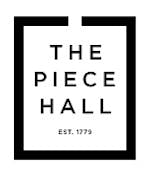Get ready to move across to the Customs Declaration Service
Published 23rd May 2022 by MY Export Hub
The Customs Declaration Service is a modern IT platform with the flexibility to grow in line with the government’s plans to have the world’s most efficient customs system by 2025.
If your business is VAT registered, you may already be using the Customs Declaration Service for VAT purposes. Before you take action, please check with your organisation to find out if you’re already registered and make sure HMRC has the correct contact details for your business. This will make sure you receive our regular customs information emails.
Customs Handling of Import and Export Freight (CHIEF) system will close
The CHIEF system will close in two phases:
- Phase one: After 30 September 2022, the ability to make import declarations will end
- Phase two: After 31 March 2023, the ability to make export declarations will end
You’ll then need to declare all goods you import into or export from the UK through the Customs Declaration Service.
If you still use CHIEF to make customs declarations for yourself, or on behalf of a trader, you need to move your declarations to the Customs Declaration Service before CHIEF closes.
Click Here for the Trader Checklist - Moving to the Customs Declarations Service
To prepare to use the Customs Declaration Service, please follow these 8 steps:
Step 1: Register for a Government Gateway account
Most business will already have a Government Gateway account to access their personal or business tax account. You should use this account to access the Customs Declaration Service.
You can register for a Government Gateway account if you don’t have one already.
Step 2: Apply for an Economic Operator Registration and Identification number
You need an Economic Operator Registration and Identification (EORI) number that starts with GB. Most businesses moving goods in and out of the UK already have one.
You can apply for an EORI number if you don’t have one already. It’s free and it only takes 10 minutes to apply. You should receive your EORI number within a week, but it can take longer during busy periods.
Step 3: Register for the Customs Declaration Service
You’ll then need to register for the Customs Declaration Service. This can take up to 5 working days.
You’ll need your Government Gateway user ID and password for yourself or your business. You will also need:
- your GB EORI number
- your 10-digit Unique Tax Reference (UTR) number – you can find this on any HMRC payment reminders, or in your personal tax account
- the address for your business that we hold on our customs records – please tell us if your address has changed
- your National Insurance number (if you’re an individual or sole trader)
- the date you started your business
Step 4: Authorise your software provider to make declarations on your behalf
This will link your software to your Government Gateway account. Your software provider will tell you how to do this.
If you’re acting on behalf of multiple clients, you may need to authorise the software for each client. Your software developer will be able to help you with this.
You may need to regularly refresh this authorisation with your provider.
If you don’t already have a software provider, you can check our list of software developers providing customs declaration software.
Step 5: Check the guidance
The Customs Declaration Service is built on the Union Customs Code, which is fundamentally different from the Community Customs Code which CHIEF is based on. You can read about the key differences between CHIEF and the Customs Declaration Service.
Please read the Customs Declaration Service guidance to understand how this impacts on you and the declarations you intend to make.
Step 6: Choose which payment method to use
You can choose the payment method which is best for your declaration. You can view your balances and payments in the Customs Declaration Service Financial Dashboard, as well as grant and amend standing authorities for your payment accounts.
The main payment methods you can choose from are:
- duty deferment account – the Customs Declaration Service uses a separate HMRC bank account to CHIEF, so you’ll need to set up a new direct debit
- postponed VAT accounting – if you’re making declarations for yourself and your business is registered for VAT in the UK, find out when you can, or need to, account for import VAT on your VAT return
You can also choose:
- cash account – these replace the Flexible Accounting System (FAS), and you’ll be set up with one once you’ve registered for the Customs Declaration Service
- immediate payment by Bacs, CHAPS, online or by telephone banking – you can pay by debit, corporate credit card or cheque
- individual guarantee – you can use these to cover customs duties for one-off or high value imports
- general guarantee account – this allows you to provide multiple guarantees from the same account, and continue importing goods into the UK and pay a disputed amount later once agreed
Step 7: Get access to the Trader Dress Rehearsal service
The Trader Dress Rehearsal service lets you practice submitting declarations and identify any errors. This may help you to feel more confident when you start to use the Customs Declaration Service.
If you’d like to use the service, you should ask your software provider for access.
You can continue using the Trader Dress Rehearsal service after you start making declarations in live.
Step 8: Submit live declarations
When you’re ready to make a declaration in the Customs Declaration Service, contact your software provider. They’ll make the request for access to the live service for you.
You should use the secure file upload service when you submit your supporting documents like licenses or certificates of origin.
The full article can be found Here





 Dan Hallett joins Big Red Industries Board
Dan Hallett joins Big Red Industries Board.jpg?auto=compress%2Cformat&cs=strip&fit=crop&h=56&ixlib=php-1.1.0&w=100&s=80dd755dd23af62b868613cff87cf7a1) Northern Ireland Protocol: the UK's Solution
Northern Ireland Protocol: the UK's Solution Leeds Beckett University students to feature at Graduate Fashion Week
Leeds Beckett University students to feature at Graduate Fashion Week






.png?auto=compress%2Cformat&cs=strip&fit=clip&ixlib=php-1.1.0&w=150&s=02705ec06ec3eb07a6900cc88c0cd0b5)




